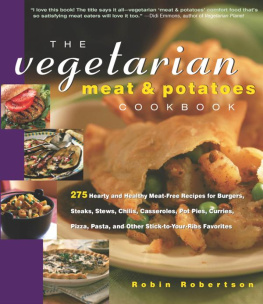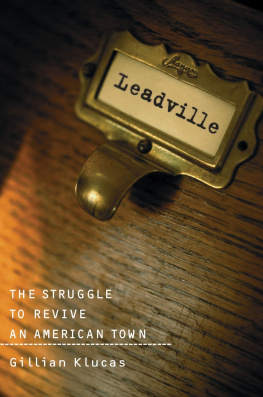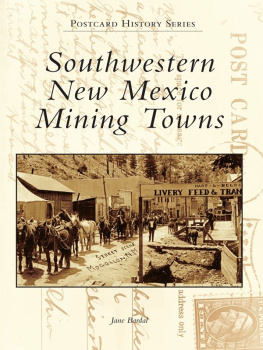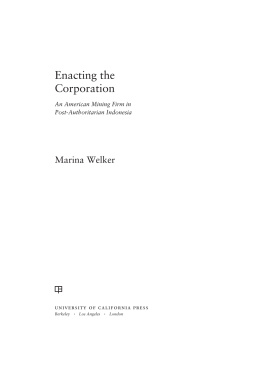Hard As
the Rock
Itself
MINING THE AMERICAN WEST
Boomtown Blues: Colorado Oil Shale
Andrew Gulliford
Hard as the Rock Itself: Place and Identity in the American Mining Town
David Robertson
High Altitude Energy: A History of Fossil Fuels in Colorado
Lee Scamehorn
Industrializing the Rockies: Growth, Competition,
and Turmoil in the Coalfields of Colorado and Wyoming
David A. Wolff
The Mechanics of Optimism: Mining Companies, Technology,
and the Hot Spring Gold Rush, Montana Territory, 18641868
Jeffrey J. Safford
Silver Saga: The Story of Caribou, Colorado, Revised Edition
Duane A. Smith
Thomas F. Walsh: Progressive Businessman and Colorado Mining Tycoon
John Stewart
Yellowcake Towns: Uranium Mining Communities in the American West
Michael A. Amundson
SERIES EDITORS
Duane A. Smith
Robert A. Trennert
Liping Zhu
HARD AS
THE ROCK
ITSELF
PLACE AND IDENTITY IN
THE AMERICAN MINING TOWN
David Robertson
UNIVERSITY PRESS OF COLORADO
2006 by David Robertson
Published by the University Press of Colorado
5589 Arapahoe Avenue, Suite 206C
Boulder, Colorado 80303
All rights reserved
First paperback edition: 2010
Printed in the United States of America

| The University Press of Colorado is a proud member of the Association of American University Presses. |
The University Press of Colorado is a cooperative publishing enterprise supported, in part, by Adams State College, Colorado State University, Fort Lewis College, Mesa State College, Metropolitan State College of Denver, University of Colorado, University of Northern Colorado, and Western State College of Colorado.
 The paper used in this publication meets the minimum requirements of the American National Standard for Information SciencesPermanence of Paper for Printed Library Materials. ANSI Z39.48-1992
The paper used in this publication meets the minimum requirements of the American National Standard for Information SciencesPermanence of Paper for Printed Library Materials. ANSI Z39.48-1992
Library of Congress Cataloging-in-Publication Data
Robertson, David, 1966
Hard as the rock itself : place and identity in the American mining town / David Robertson.
p. cm.
Includes bibliographical references and index.
ISBN-13: 978-0-87081-850-9 (hardcover : alk. paper) ISBN 978-1-60732-076-0 (pbk. : alk.
paper)
ISBN-10: 0-87081-850-3 (hardcover : alk. paper) 1. Coal mines and miningIllinoisToluca
History. 2. Coal mines and miningColoradoCokedaleHistory. 3. Mines and mineral
resourcesOklahomaPicherHistory. 4. Cities and townsUnited StatesSocial conditions.
5. Group identityUnited StatesCase studies. I. Title.
HD9548.T65R63 2006
307.7660973dc22
2006015016
Design by Daniel Pratt
19 18 17 16 15 14 13 12 11 10 10 9 8 7 6 5 4 3 2 1
For Dana, Victoria, Isabella, and Finn
Illustrations
MAPS
FIGURES
Preface
IT CAN BE DIFFICULT TO PINPOINT PRECISELY THE ORIGINS OF A LARGE RESEARCH project, especially one that has evolved over a lengthy period of time. That is not the case with this book, however, which is the end-product of an encounter I had as a first-year geography graduate student. When I arrived at the University of Oklahoma more than a decade ago, I was planning to study environmental impacts and land reclamation in one of the regions historic oil fields. When the opportunity arose to study a partially reclaimed strip mine near Henryetta, Oklahoma, however, my attention shifted to mining, and as I later recognized, not only was my topical focus altered by this research experience, so was the broader direction of my academic career. I entered the Henryetta coal mine in the summer of 1993, having just completed coursework in physical geography, quantitative methods, and environmental impact assessment. I had come to the field equipped with a pH meter, water and soil sampling equipment, and a multi-variable matrix for assessing environmental quality. Needless to say, I found what I was looking for: acid mine drainage, acidic soils, and erosion and sedimentation problems. What most captured my attention, however, were qualities of the environment that would have eluded me had the propertys owner not offered to show me around the mine site. Although I had anticipated finding environmental problems, I had not expected to discover that this landscape also had a significant functional and emotional value.
The landowner told me that he had lived close to the mine site for most of his life and that he had purchased the property in the mid-1980s. Although portions of the mine land lay barren and were unproductive, other areas were suitable for cattle grazing, including the wooded washboard-like ridges of spoil that bordered his property. As we strolled along a pathway winding through the Crosstimber forest that had recolonized the mine waste, the landowner showed me a spot where he was sowing grasses in order to enhance deer habitat. The area provided good hunting, he said, but he regretted that the propertys pit ponds, a picturesque chain of translucent lakes rimmed by cattails and overhung by willow trees, were barren of fish. Before the water had turned acidic there had been good fishing here. In fact, when he was young, his grandparents had operated a summer concession stand on one of the lakes, which had served as a popular swimming area and fishing hole. I ran all over this place, I know every inch of it, he told me as he pulled back a clump of bushes to reveal the foundations of his grandparents onetime business, and as he continued to recount the history of the site and to tell me of his connection to it and as we talked about his future plans for the area, I was struck by the fact that there was a story to be told about this environment that I was unequipped to explore. My environmental assessment matrix contained no cells in which I could record the lands history or meaning, values that make up the mining landscapes character as a place, the most intimateand in ways most indispensableaspect of environmental quality.
In the popular imagination, mining environments are forsaken places, but my experience at Henryetta challenged this preconception and instilled in me a desire to learn more about the role mining landscapes play in the lives of those who inhabit them. I adopted a new research focus aimed at acquiring a better understanding of minings physical and social legacies, a topic that drew me into the domains of cultural and historical geography, mining history, industrial preservation, and other literatures. I initially struggled, however, to find a way to transform this interest into a cohesive dissertation. Fortunately, Richard Francaviglia gave me the guidance I needed at this critical juncture. He encouraged me to follow the geographers instinct for exploration: to leave my desk and to get out and explore as many historic mining districts as I could manage. Francaviglias advice eventually led me to Picher, Oklahoma, and Cokedale, Colorado. The other case study presented in this workToluca, Illinoiswas brought to my attention by fellow graduate student and always-reliable confidant, Blake Gumprecht. I remain indebted to both these individuals for directing me to these study sites, which came to serve as the focal point of my doctoral dissertation in geography, filed at the University of Oklahoma in 2001. This book is an outgrowth of that study.
Many others also deserve acknowledgment for helping me carry out this research. University of Oklahoma professors Gary Thompson, Neil Salisbury, and Mark Meo provided guidance in my early years of graduate school. Naturally, the members of my doctoral committee had essential roles in overseeing the research on which this work is based. Gavin Bridge educated me in the political and economic institutions of mining and its environmental effects; Deborah Dalton showed me how to look at mined land from the landscape architect and artists perspective; Richard Nostrand taught me how to conduct historical research; Robert Rundstrom kept my research grounded in theory and matters of social identity; and, by example and exacting proofreaders pen, Bret Wallach showed me how to write. These individuals invested significant time and energy in my education, and each served as a vigilant and professional academic mentor. In this regard, additional recognition is due Robert Rundstrom, my doctoral committee chairperson and friend. Bob showed an unwavering commitment to this research. He gave me the freedom to explore my own interests but continually pushed me down unconsidered avenues of thought. His faith in this work was constant and his criticism was always constructive.
Next page














 The paper used in this publication meets the minimum requirements of the American National Standard for Information SciencesPermanence of Paper for Printed Library Materials. ANSI Z39.48-1992
The paper used in this publication meets the minimum requirements of the American National Standard for Information SciencesPermanence of Paper for Printed Library Materials. ANSI Z39.48-1992